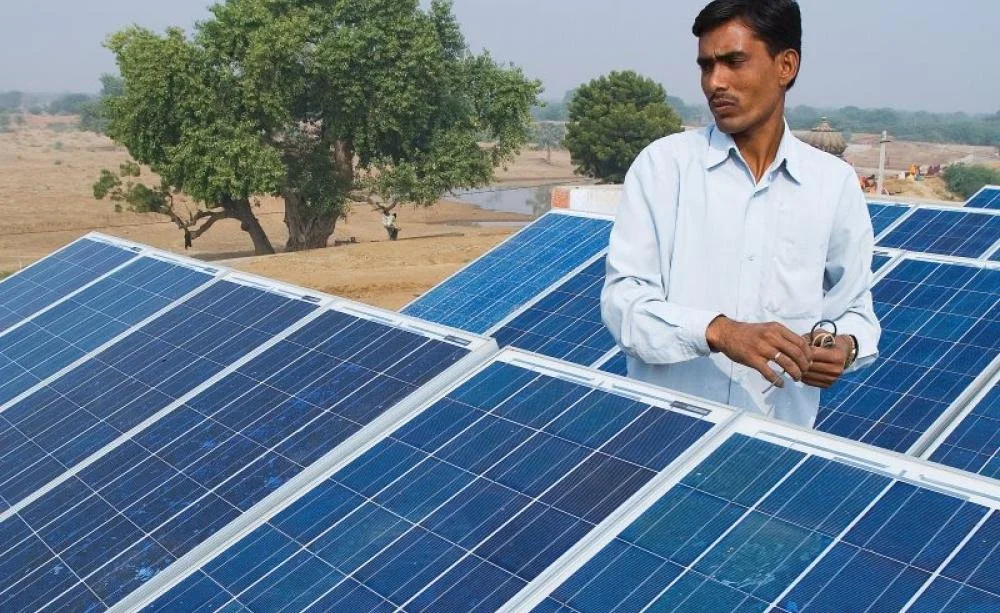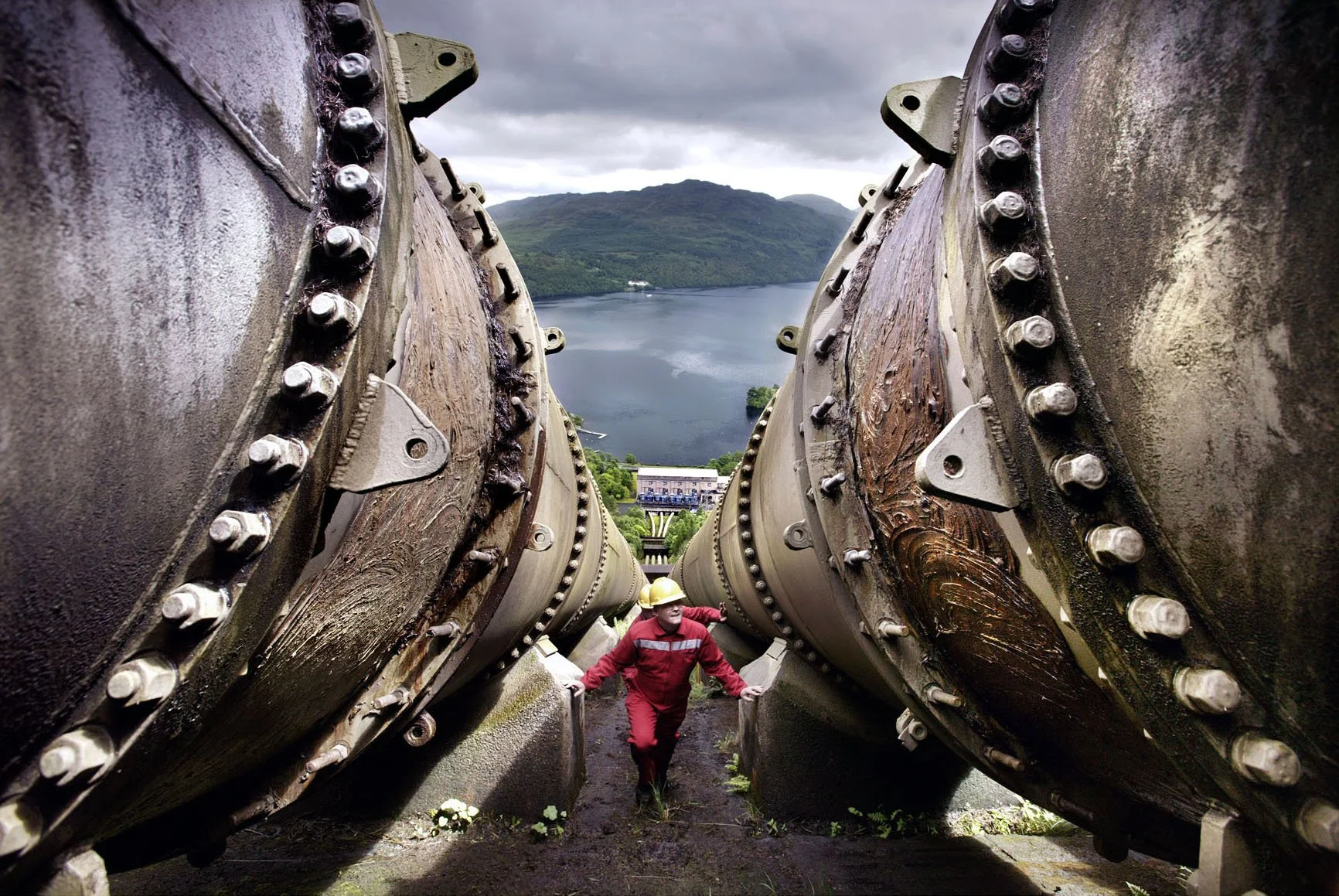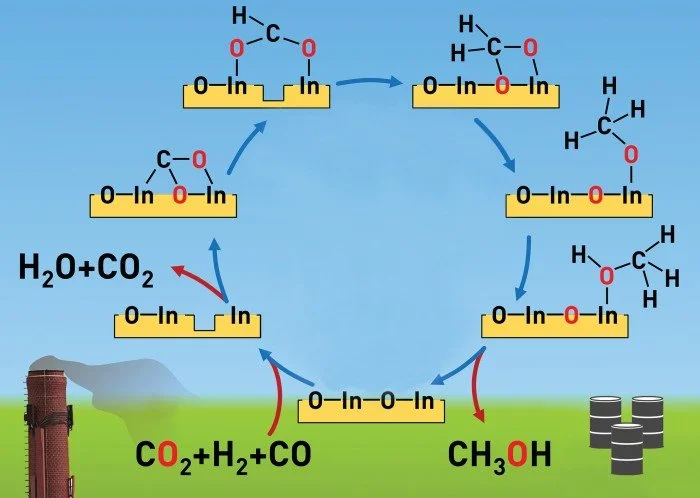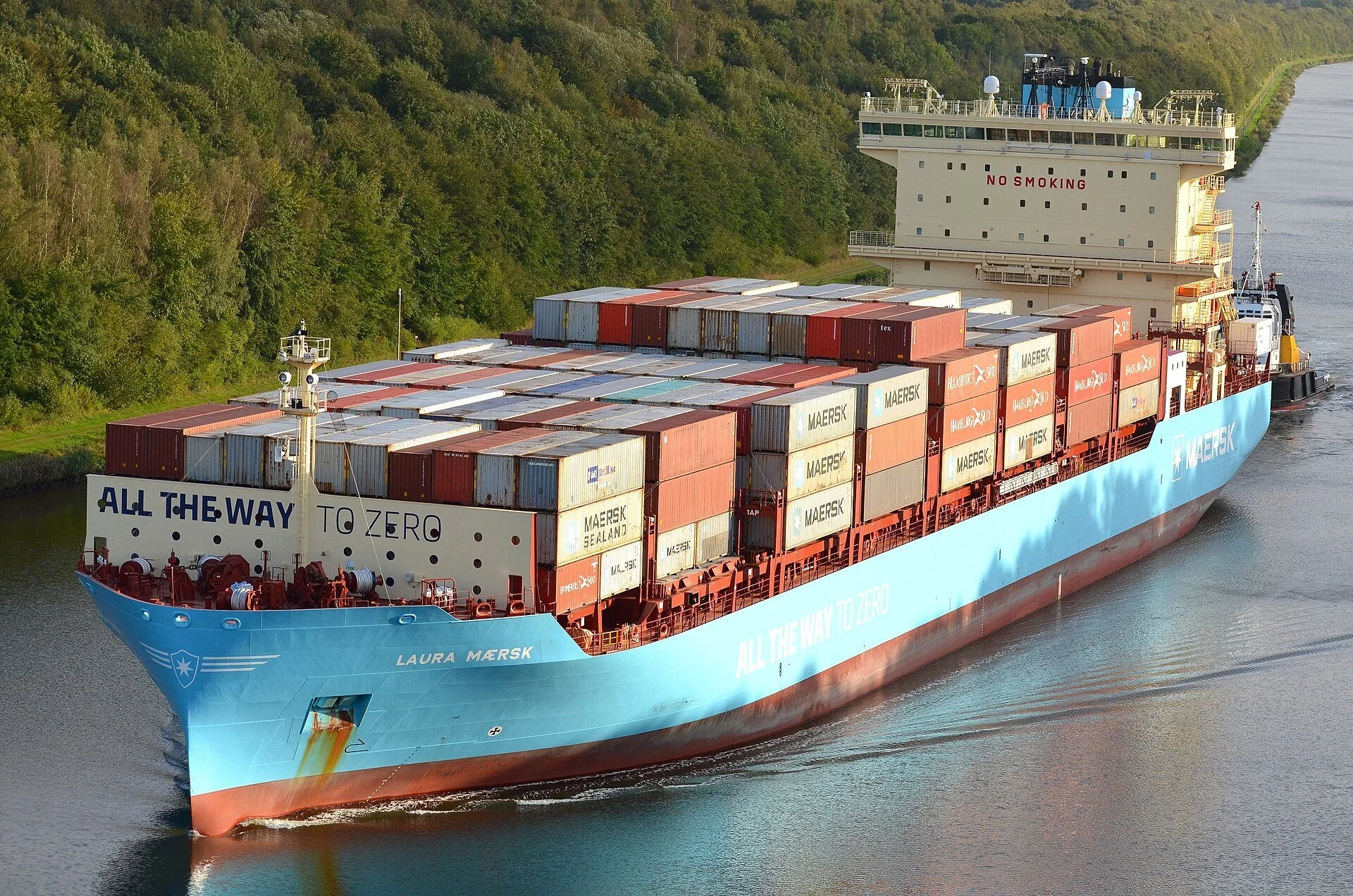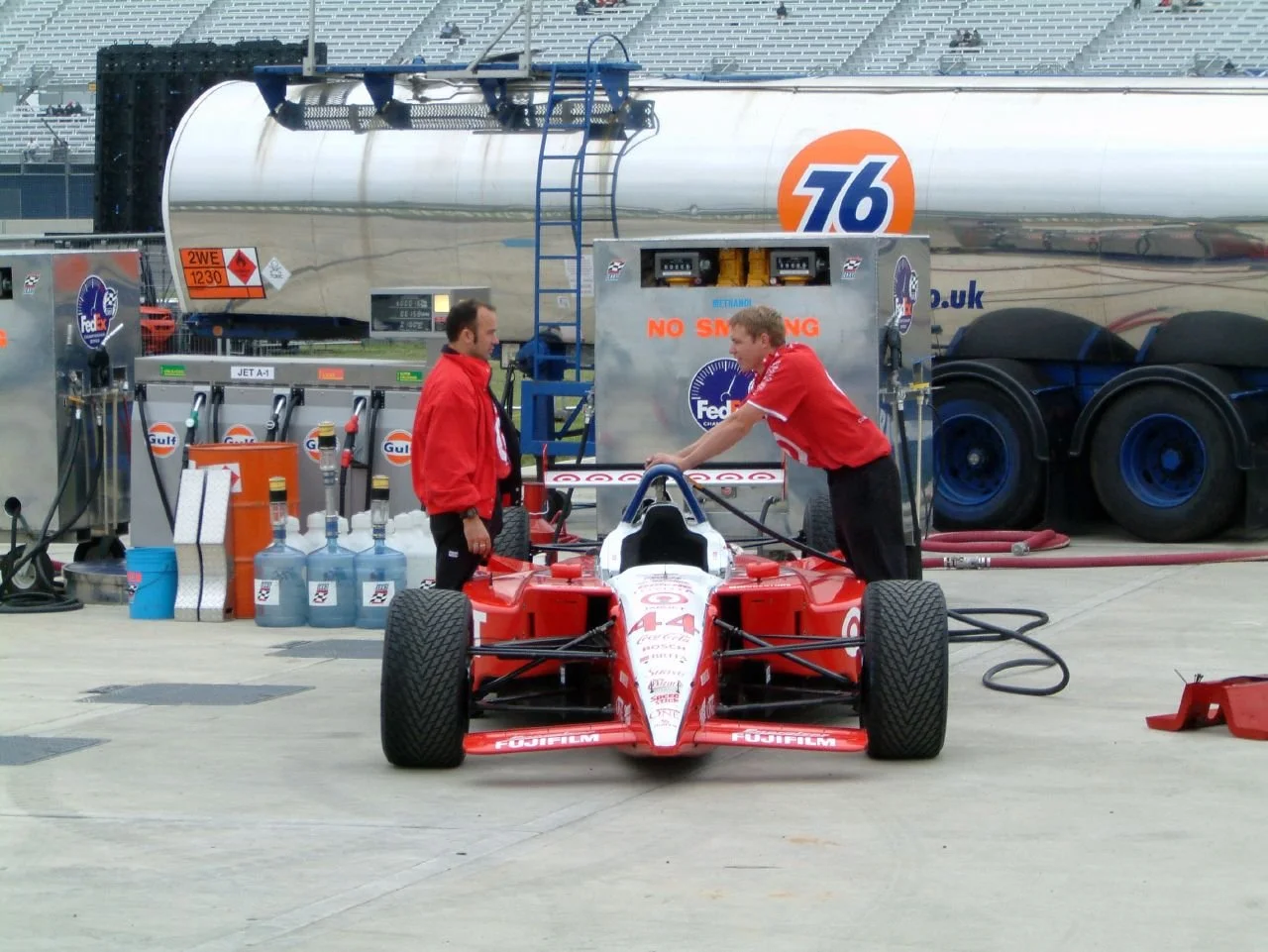Alternatives to Green Ammonia
Green Ammonia represents a game-changing solution to many of the problems facing the Green Energy Transition necessary to achieve an end to carbon emissions from fossil fuels. But it’s certainly not the only game in town. Numerous other technologies also have a big (or in some cases small) role to play in the fields of energy storage, movement, and fuels for transport and other mobile applications. These include batteries, pumped storage hydro, hydrogen, carbon-based synthetic fuels, long distance power transmission, and moving industry to where the energy is.
Locally generated renewable energy
Using local renewables for local energy needs should generally be the first choice in moving to zero carbon energy: secure in that it’s an energy source that’s always there, if not always on. Usually local wind, solar, geothermal, hydro and marine energy sources will be the most efficient and lowest cost solutions, as they don’t have to be imported from anywhere else.
The utility of local renewable generation will be increased with various forms of energy storage allowing it to be saved up for times when local renewables are, for whatever reason, producing enough power to satisfy demand. One of these is Green Ammonia, but there are other contenders: batteries, pumped storage hydro, green hydrogen, and carbon-based renewable fuels, are all discussed in this section. Also see the section on long distance power transmission.
Photo: Close is best ... a barefoot solar engineer cleaning PV panels in village near Ajmer, Rajasthan, India. Credit: Knut-Erik Helle via Flickr and The Ecologist (CC BY-NC-ND).
Photo: Tesla Model S ‘skateboard’ chassis with battery in place. Credit: Inside EVs.
Graphic: principles of the sodium‐ion battery, now emerging as a viable alternative to lithium‐ion: the materials are cheap, abundant, and less toxic. Credit: Singh et al, ‘Unleashing the Potential of Sodium‐Ion Batteries’.
Photo: iron-flow batteries are used to store solar energy for overnight use. They’re also easily recyclable and present little fire risk. Credit: Energy Storage Industries.
Batteries
Batteries are a vitally important technology for the Green Transition and have already found a major role in transport, especially in domestic vehicles, but also in buses, motorcycles light trucks. They’re also ubiquitous in phones, computers, power tools.
These generally use lithium-ion technology. However other technologies are likely to take a growing share of the market, such as sodium-ion, which is heavier but cheaper owing to the abundance of its key raw material, sodium carbonate (best known as a low cost traditional washing and cleaning product). Recent advances in sodium-ion cathode technology may signal their rapid advance.
Households and businesses with solar panels are also investing in lithium-ion batteries to allow them to consume more of the electricity they generate, which is generally not matched with demand. This is especially valuable for off grid households. The Tesla Powerwall is a market leading product in this sector but it has many competitors. Cheaper sodium-ion batteries (see image) may end up dominating this sector in which their greater weight is less important than in vehicles.
Another emerging technology is the magnesium-ion water battery, which is also made of abundant, low cost materials, and can be fully recycled at end of life. The use of water as electrolyte also greatly reduces fire hazard.
Professor Tianyi Ma, lead researcher at RMIT University, says they could replace lead-acid batteries within three years, and Lithium-ion within a decade, potentially offering greater energy density, faster charging times and better support for power-hungry devices and applications.
In grid-scale applications other battery technologies may find advantage, in particular flow batteries, which run off a storage tank of ‘charged up’ electrolyte, and can consequently hold much greater electrical charge at little extra cost. The world’s biggest iron-flow battery is due to be installed in Queensland, Australia. Able to supply 150MWh over 14 hours, its main purpose is to store up daytime solar energy and release it at night.
As we write the states of South Australia and Victoria are seeking tenders for 3.2GW of despatchable storage capacity capable of supplying power for an average four hour period and iron-flow batteries are certain to be leading contenders.
Image: Schematic diagram of the Raccoon Mountain Pumped-Storage Plant in Tennessee, USA. Credit: Funkjoker23 - Public Domain.
Photo: SSE Renewables is to convert its hydro generating station at Loch Lomond in the Scottish Highlands to a pumped storage system, with nearby Loch Sloy as the upper storage reservoir. Credit: wfmillar, CC BY-SA 2.0.
Photo: Looking down the pipes to the 150MW generating station at Loch Lomond, 277 metres below Loch Sloy. A second set of pipes will son be added to allow water to be pumped up from Loch Lomond. Photo: SSE Renewables.
Pumped Storage Hydro
Pumped storage hydro is a valuable technology for stabilising electrical grids and covering for sudden surges in demand or failure of generation capacity. A classic example is the Dinorwig Power Station in the Snowdonia National Park, Wales, known locally as the ‘Electric Mountain’. From a standing start, the plant can achieve its maximum generation rate of 1.8GW after 75 seconds, or once its six power units are synchronised and spinning, just 16 seconds. Its 9.1 GWh capacity allows it to maintain full power output for up to six hours.
The plant recharges by pumping water from the lake at its base to its reservoir 100m above, when power demand and prices are low. It operates with an impressive 75% round trip efficiency.
Other sites for similar schemes have been identified in the UK, most recently on Loch Lomond in the Scottish Highlands (see photos) where SSE Renewables is to redevelop an existing hydro plant fed from nearby Loch Sloy as a pumped storage generator. With the increasing need to store renewable electricity when it’s abundant, so sell at higher prices when it’s short, other examples are certain to follow.
Useful though the technology is valuable for relatively short term electrical storage on the scale of hours or even days, it’s unable to satisfy the need for much larger flexible storage capacity able to produce a substantial part of an industrial economy’s entire power needs over a period of multiple days or weeks.
Norway is an exemplar of a different approach with its 34GW installed base of hydropower capacity, and annual power production of some 150TWh, depending on rainfall (which is increasing as a result of climate change). Hydro represents some 95% of its total annual power generation.
The country’s hydropower dams were originally built mainly for baseload generation within Norway itself. But as a member of the northern Europe synchronous grid and its Nordpool power market, Norway has become a major trader in power, and Europe’s biggest power exporter: selling when prices are in high in Sweden, Finland, Netherlands, Denmark, Germany and the UK via HVDC cables, and buying for its own use when prices are low, so retaining higher water levels in its reservoirs.
It’s able to do this by modulating its hydro generation to take advantage of both high and low prices, and so acts as a reserve generator and market of last resort, balancing renewable energy fluctuations, principally wind, across northern Europe.
Other countries would doubtless like to do this too however Norway is uniquely privileged in its mountainous topography and high rainfall, and few are able to follow its example. The main opportunity is for Norway to further increase the despatchability of its hydropower resources, and the capacity of the HVDC power lines connecting to neighbouring countries in which variable wind and solar generation are taking an ever greater share of power production.
Green Hydrogen
Green Hydrogen is produced when renewable electricity is used to electrolyse water, also producing oxygen (which may be saved for sale or released to the atmosphere). The hydrogen can be converted back into electricity, ideally using fuel cells due to their high efficiency. So Green hydrogen offers a way of storing renewable electricity.
The currently available efficiency of electrolysis is best estimated based on actual results obtained in tests (see Table 3) which show that the highest performing equipment uses 52.3 kWh (188.3 MJ) /kgH2. Using the Higher Heating Value (HHV) of hydrogen (which includes the vaporisation heat of the steam) of 39.39 kWh (141.8 MJ) /kgH2 we get an efficiency of 75.3%. (If we use the Lower Heating Value (LHV) of 33.33 kWh/kgH2, we obtain a figure of 63.7% efficiency.)
Increases in electrolysis efficiency are anticipated: Australian green energy company Hysata claims that its novel electrolyser technology is 95% efficient (based on the HHV of hydrogen) and expects it to dominate the market by 2030. If the promise is delivered, the electrical energy of hydrogen production will fall to 41.5 kWh (149 MJ) /kgH2. This represents an efficiency of 80% in terms of the LHV.
Hydrogen Storage
The Green hydrogen then needs to be stored for future use. In ambient conditions hydrogen has a density of 84g /m3, with a correspondingly low energy content of 1 MJ (0.28 kWh) /m3. This means it has to be liquefied or compressed in order to store worthwhile amounts of energy.
Liquefaction requires cooling to -253C, at which temperature the hydrogen has the much higher density of 71 kg / m3, and an energy density of 8.5 GJ (2.36 MWh) / m3. This is an energy intensive process requiring around 10 kWh /kg, or 0.71 MWh /m3, of liquid hydrogen.
Or the hydrogen may be compressed at ambient temperature to 350 bar, creating a supercritical gas with a density of 26.1 kg/m3, and an energy density of 3.1 GJ (0.87 MWh) / cubic metre. The compression consumes some 2 kWh/kg, or 0.052 MWh/m3. This option is therefore greatly preferable from an energy perspective. Alternatively if it is chosen to compress to 700 bar, to achieve a higher density of 42 kg/m3, and energy density of 5.0 GW (1.4 MWh) /m3, the energy cost rises to some 3 kWh/kg.
Also, see below the section on salt cavern hydrogen storage, for which we estimate the energy cost of compression (at variable pressure dependent on geology but around 150 bar) at 1 kWh/kg (1 MWh/t). This is the preferred economic option. We assume that by the time substantial investments are made in power -> H2 in the UK the Hysata technology is available; that CCGTs operating at 60% efficiency (based on LHV) will be employed for power generation; and the hydrogen is stored at moderate pressure in salt caverns close to the power stations. Hence we find for complete round trip, using currently available technology:
Power -> liquid hydrogen -> power has a round trip efficiency of (33.3 x 0.6) / (41.5 + 1) = 47%
This represents a workable solution to the storage of energy as hydrogen, especially where the hydrogen is stored close to where produced and combusted, avoiding transport costs. However first priority for small short term deficits in power supply will likely be taken for more efficient solutions such as Pumped Storage and batteries. Hydrogen’s forte will be in supplying larger amounts of power over longer periods, for example in prolonged Dunkelflaute conditions.
Hydrogen transport
In the case of hydrogen being transported by ship, energy and other costs will increase substantially. For safety reasons it’s necessary to liquefy the hydrogen, the most energy intensive of the scenarios explored above. But that requires tankers with very high levels of insulation in order to maintain a temperature of -253C or below, and prevent excessive ‘boiling off’ of hydrogen. That would require the construction of a new fleet of hydrogen carriers, requiring considerable investment.
However ammonia is relatively cheap and simple to transport by ship as it can use ordinary bulk gas carriers already in widespread use and production for LPG (liquid petroleum gas) butane, butadiene, propylene, vinyl (ethene) chloride monomer, and ammonia itself. These tankers are usually designed to keep their cargo as cold as -42C (for LPG - more than cold enough for liquid ammonia, with its boiling point of -33.3C) and operate at various pressures. For shipping LNG (liquefied natural gas) more specialist highly insulated tankers are employed to carry the gas as an unpressurised liquid at -161C or colder.
But the clincher is that liquid ammonia has a 50% higher energy density than liquid hydrogen - 12.7 GJ/m3 at -33.3C, as against 8.5GJ / m3 at -253C. So not only can liquid ammonia be transported in much lower cost vessels, it also carries half as much energy again as liquid hydrogen, for any given volume.
See this interesting article enumerating the various practical difficulties of using hydrogen as a fuel for an ordinary passenger car, based on Toyota’s experience in trying to develop one. These include not just the factors mentioned above like bulky fuel tanks, high levels of ‘boil off’, and low energy density, but unexpected ones like the very short lifetime of fuel pumps, which have to operated without lubrication to prevent contamination of the hydrogen fuel.
Image: Cross-section of the HyStock location in the Netherlands, showing where hydrogen storage caverns can be created in pillar-shaped rock salt formations. Credit: TNO, Netherlands.
Image: Map of Australia’s thick (100m +) halite formations suitable for the construction of salt caverns for Green hydrogen / ammonia storage. The most useful will be those close to ocean enabling water electrolysis to hydrogen to take place for local storage, and most likely for further synthesis to Green ammonia as an export product for onward shipping. Credit: Walsh, Easton, Wang & Feitz in Evaluating the Economic Potential for Geological Hydrogen Storage in Australia.
Ammonia Storage in Salt Caverns
Additionally, salt caverns are ideal for storing liquid Green ammonia at ambient temperature and a pressure of under 10 bar (atmospheres).
At the temperature and pressure typical of salt caverns, 150 bar / 15C, hydrogen has a density of 11.5 kg/m3. Since hydrogen has a heat value (LHV) of 33.3 kWh/kg, its volumetric energy density is 383 kWh/m3. Liquid ammonia’s volumetric energy density (LHV) is 3.5 MWh/m3. So the liquid ammonia has a 9.14 times greater energy value in in salt cavern conditions than hydrogen.
In simple terms, a given salt cavern will be able to store nine times more energy as ammonia, than as hydrogen.
However there is a caveat: salt dissolves in ammonia, to a concentration of 21.5 kg/m3. This is enough to be problematic as over time the ammonia will dissolve and redeposit salt gradually eating away at its containment.
Accordingly a suitable liner should be installed around the salt cavern prior to introducing liquid ammonia to it. Steel and plastic have both been proposed for such use however steel would be more liable to corrosion from salt, or if the cavern were to be used for hydrogen, embrittlement.
Salt Cavern Hydrogen Storage
However there is one hydrogen storage system that does offer considerable promise: moderate pressure (up to 150 bar) in large underground salt caverns constructed within salt domes or other deep, stable halite structures.
The caverns are created by pumping water into the intended cavern location, dissolving salt in the water, and pumping out the resulting brine. Examples include several small operational caverns on Teesside; the HyStock project in the Netherlands; and the recently announced project at Portland Harbour in Dorset, UK.
Salt caverns should be used preferentially for hydrogen storage wherever geographically available, “especially long-term storage as no other option offers such a high cost-effectiveness”, write Burke et al.
Salt caverns are a globally scarce resource so this solution isn’t applicable everywhere. However suitable geologies occur in England, Northern Ireland, Netherlands, Germany, Poland, Romania, Morocco, Angola, Gabon, Australia, Brazil, the Gulf coast of the US, and Nova Scotia, Canada.
We can reasonably expect that surplus power from renewables in places with suitable geology will be used to produce hydrogen for storage in salt caverns. Further, these locations are likely to form vital nodes in the wider Green energy economy. They will also provide a valuable temporary store for hydrogen to be used for Green ammonia manufacture, allowing the synthesis plants to operate more efficiently.
Economics
In his study, Burke considers a “typical salt cavern case” for the storage of 500 tonnes of hydrogen (requiring about 50,000 m3 capacity - at the 150 bar / 15C typical of salt caverns, hydrogen has a density of 11.5 kg/m3). He writes:
“This costs about $18M ($36 /kgH2 or about $1 /kWh) to prepare. The levelized cost of storing the hydrogen in the cavern would be $1.2 /kg, if it is stored for 120 days (4 months) and only $0.15 /kg if stored for 15 days on a regular basis.”
This equates to $0.036 /kWh (£0.028) on a 120 day cycle, and $0.005 (£0.0038) on a 15 day cycle. These costs are affordable in the context of consumer electricity prices, currently £0.245 ($0.32) /kWh in the UK.
Capacity
A 50,000 m3 salt cavern storing some 500t of hydrogen would have an energy value of about 16.5 GWh (or 10GWh when used to generate power at 60% efficiency). This is comparable to the Dinorwig pumped storage power station in Wales, with 9.1 GWh.
The 2022 UK Parliament report on Longer Duration Energy Storage states that to replace natural gas in grid balancing Britain needs 3-4 TWh of energy storage for inter-day applications, and 10 TWh for inter-seasonal storage. We would therefore need 200 such facilities for inter-day storage, and about 600 for inter-seasonal storage. Or in round numbers, about 1,000 salt caverns with a total storage capacity of 5 million m3.
Is this feasible? John Williams of the British Geological Survey and colleagues investigated this question in 2022 and concluded that this could be achieved many times over. “The upper-bound theoretical capacity for hydrogen storage onshore UK is 2150 TWh”, they write, while “Peak load deliverability of 1876 GW is technically possible from salt caverns.”
Given that UK annual electricity consumption (2022) was 320.7 TWh and peak power demand was 48.6 GW, the UK’s salt cavern hydrogen storage resource is abundant.
Salt caverns offer a viable approach for the storage of Green hydrogen in the UK, as a backup for the generation of electricity to ‘keep the lights on’ (and everything else as well) at times of low renewable power generation.
Excavated Rock Caverns
Caverns excavated from rock offer an alternative storage medium for hydrogen, although construction cost is considerably higher. Also such caverns would need to be lined, probably with plastic, to provide secure containment. At least two companies, Air Liquide and Geostock, are moving into this space.
Lined rock caverns would also be able to store ammonia (see left / above) where no suitable geology for salt caverns exists.
Carbon-Based Synthetic Fuels
Green Ammonia isn’t the only fuel that can be produced from renewable energy. It’s also possible to produce Green carbon-based fuels, among them methane, methanol, ethanol, dimethyl ether (DME) and light hydrocarbons such as ‘sustainable aviation fuel’ (SAS).
This involves capturing CO2 from concentrated streams (for example at power stations, breweries or cement plants) then reacting it with Green hydrogen to create methanol, alkanes and other molecules. When the fuels are burnt, the carbon they embody is typically emitted to the atmosphere as CO2.
The context: the world will need massive CDR
Synthetic carbon fuels are a technically viable solution and have value in achieving near-immediate reductions in carbon emissions. But we need to look at it in the context of the world’s trajectory to a zero-carbon future in which temperature rises are limited to 1.5C in accordance with climate commitments and treaties.
These require the complete cessation of fossil fuel combustion by 2050-2060 followed and a long period (50+ years) in which a huge volume of excess carbon dioxide is removed from the atmosphere and put into safe long term storage, for example in stable geological structures or deep ocean. According to the IPCC Special Report: Global Warming of 1.5C, Summary for Policymakers, 2018,
“C.3. All pathways that limit global warming to 1.5°C with limited or no overshoot project the use of carbon dioxide removal (CDR) on the order of 100–1000 GtCO2 over the 21st century.”
At present the world appears to be set on a ‘high overshoot’ pathway requiring the removal from the atmosphere of some 1,000Gt of CO2 over the second half of this century. This represents 20 Gt/year, 2.3 Mt/hour, or 638 t/s.
In the post-fossil fuel era, the world will also need atmospheric CO2 to make carbon-based materials (plastics, lubricants, rubber, chemicals, etc) currently made from fossil fuels. The 2021 ‘Industrial need for carbon in products’ study identified a need in 2050 for 1.2 Gt/year of carbon for such uses, requiring the sequestration of 4.5 Gt/year of CO2.
It takes about 500t of coal to generate 1GWh of electricity (US figure), so the rate of CDR required for 24.5 Gt / year can be visualised as over 10,000 large (2GW) coal-fired power stations running backwards - removing CO2 from the atmosphere instead of pumping it in.
This undertaking will be the most enormous and costly human enterprise ever, and put immense pressure on both human and terrestrial resources. So the last thing the world will want is to have to perform even more CDR to make carbon-based synthetic fuels.
Current CO2 emissions are 37.4 Gt/year. Even if only a small proportion of current fossil fuel use is to be replaced by synthetic carbon fuels that would greatly increase the required volume of CDR, and all the associated difficulties.
Technical Considerations
Significant volumes of synthetic carbon based fuels are already being manufactured by steam reformation of coal to carbon monoxide and hydrogen, then subjected to the Fischer Tropsch process (FTP) to produce alkanes of various carbon chain lengths some of which may be used as fuel, and others as lubricants.
The FTP may be adapted to work from carbon dioxide captured from biomass, power plants or cement works, or directly from the atmosphere, and green hydrogen to produce ‘green’ synthetic fuels. The methanol synthesis uses two stages of hydrogenation:
the ‘reverse water−gas shift reaction’ (RWGS) (CO2 + H2 → CO + H2O), and
carbon monoxide hydrogenation to methanol (CO + 2H2 → CH3OH).
Synthetic carbon-based Green fuels like methanol do have certain advantages over Green Ammonia:
they have a higher energy density (by weight and volume) than ammonia;
many liquid carbon-based fuels can be kept in tanks at ambient temperature and pressure;
they are better suited to use as fuel in domestic vehicles due to their low toxicity and environmental safety; and
there’s an enormous existing fossil fuel-based industrial and transport infrastructure, that synthetic carbon fuels can fit into at a lower adaptation cost.
The Danish shipping company Maersk launched its first dual fuel tanker designed to operate on either conventional fuel oil or Green methanol in 2023, the first of 25. The company has committed to achieving zero-emissions shipping by 2040, and there’s little doubt that this is the quickest transition route available.
As Maersk explains the situation: “Currently, the only scalable solution is green methanol and we have two operating vessels capable of green methanol and another 23 on order. Ammonia could be a promising green fuel option later in this decade, however, there are still safety issues to be resolved as it is a toxic gas. At Maersk, we see a future consisting of a mix of different green fuel solutions.”
In general, Green methanol is a solution that can be implemented rapidly, and without harm if it’s capturing CO2 from emissions that would otherwise enter the atmosphere. But it’s less sustainable in the long term than ammonia: as rich sources of CO2 become scarce, it will have to obtained at higher cost (in money and energy) via direct air capture (see above).
For more information see the Royal Society’s 2019 briefing paper Sustainable synthetic carbon based fuels for transport, which foresees that Green methanol will cost almost 20% more than Green ammonia.
Clearly, these synthetic Green fuels have a useful role in the short term for companies like Maersk that are eager to decarbonise rapidly. In the longer term the core technologies will be essential for producing fossil fuel-free oils and greases for lubrication, plastics, chemicals, pharmaceuticals, and other such uses. As such, early investment in the synthetic carbon-based fuel sector will contribute to long term global decarbonisation.
But once large scale CDR is under way, making rich sources of CO2 scarce, ammonia will have the advantage since the element at the core of the molecule, nitrogen, will continue to be readily available by separation from the atmosphere. And ammonia can be burnt without returning any carbon to the environment.
Image: Methanol synthesis from carbon dioxide and hydrogen. Vacancies on the surface of a ZrO2-supported In2O3 catalyst play a key role in the process. Credit: 改编自 Qingfeng Ge & Javier Pérez-Ramírez via C&E News.
Image: IPCC projections of required carbon dioxide future removal (CDR) to meet global temperature within 1.5C of historic levels, based on four emissions scenarios. Unfortunately the world emissions appear to be on a trajectory most closely resembling P4, requiring ~ 100Gt of CDR in the later part of this century. Source: IPCC Special Report: Global Warming of 1.5C, Summary for Policymakers, 2018.
Image: a field of Giant miscanthus grass, a highly productive biomass crop suited to combustion in biomass power stations, which could be fitted with CO2 removal (CDR) plant to form the basis of synthetic fuels, chemicals, and CO2 sequestration. Credit: Hamsterdancer via Wikimedia, CC BY-SA 3.0.
Photo: Launched in 2023, the Laura Maersk is the world's first container ship to be powered by a methanol engine, intended to burn synthetic Green fuel. Credit: Jens Dohrn CC BY-SA 4.0.
Photo: methanol-fuelled racing car at the Rockingham Motor Speedway in 2002. Converting petrol or diesel engines to run on methanol - Green or otherwise - is relatively inexpensive. Credit: BigTallGuy via Wikimedia Commons CC BY 2.0.
Image: should we be making new carbon fuels from sequestered CO2? Or burying all we can below ground and sea, as shown in this schematic diagram? Credit: The joy of all things CC BY-SA 4.0.
Long distance power grids
In the early days of electricity a single power station (probably coal-fired) would serve a local community through a simple distribution grid. Over time these small local grids, originally operated by rival companies, tended to merge so as to achieve economies of scale, making bigger, more complex grids incorporating multiple power generation plants and millions of consumers.
This smoothed out the inevitable lumpiness of power demand from individual customers. Likewise, the unexpected failure of a single power station could be compensated for by ramping up the output of others, with barely a flicker of a lightbulb to see for it. Over time the many small urban power stations, which caused local pollution and were expensive to run, were replaced with much larger plants close to coal mines, rail heads and water, and high voltage AC power lines running for hundreds of kilometres were built to supply their now remote customers.
However these AC grids have their limitations in the age of renewables. There are times when there’s not enough wind or sunshine (‘Dunkelflaute’) to meet power demand over an entire weather system 1000km or more across. So a grid that could deliver a continuous power supply would need to extend reach over entire continents and span multiple time zones.
But very long distance grids need to operate using a different technology. Long distance AC transmission is inefficient due to resistive and reactive power losses, losing 6.5% of transmitted power per 1000km, and asynchrony across distant parts of the grid forcing unidirectional current flow. High Voltage DC (HVDC) cabling can ameliorate these difficulties as set out in this National Grid document, and losses are reduced to 3.5% per 1000km. Specific benefits include:
power lost in transmission reduced by over 50% relative to AC
the ability to link separate electrical grids that are asynchronous, or even operate at different frequencies
the cost of end connectors to AC systems is more than offset by the lower cost of line construction due to less requirement for expensive copper, due to removing the need to transmit three power phases, and elimination of the ‘edge effect’.
Perhaps the biggest problem with very long distance dedicated energy infrastructure - whether power cables or pipelines - is that they are may be subject to unpredictable political and security problems, as recently demonstrated by the deliberate blasting of three gas pipelines under the Baltic Sea.
Consider also the Desertec Industrial Initiative, founded in 2009 to catalyse the very large scale generation of solar power in the Sahara and convey much of it (after allowing for local use) to Europe using HVDC cables, which lost investor confidence in 2014 due to political instabilities in the countries concerned. Happily a Desertec 3.0 has risen from its ashes, dedicated to “Accelerating the energy transition in the Arab World towards supply of 'green electrons’ and 'green molecules' across the regional and global energy value chains”, but there’s no longer any mention of long distance energy transmission infrastructure.
However there are parts of the world where long distance HVDC cabling is politically and financially feasible, for example in the US, Canada and Mexico; and in China and adjoining nations. In the US, a proposed $400 billion HVDC Macrogrid would build a US-wide network of 210 underground HVDC cables with additional undersea cables along all continental US coastlines. If completed it would simultaneously accelerate North America’s clean energy transition, improve its energy security and reduce green energy cost.
Moving industry to the energy
… not energy to the industry. In the early development of industry, this is of course exactly what happened. Medieval iron and steel foundries would locate close to the forests in which the charcoal then used for smelting was made. Mills were built where the wind blew or water ran down mountainsides. And with the industrial revolution, energy intensive industries established close to coal mines. As railways replaced horses, carts and canals, so transport costs fell and industries were no longer constrained in the same way. Now coal, oil and gas are routinely transported across the world in enormous bulk carriers often at remarkably low cost.
But this state of affairs may well not continue. Renewable energy is almost all produced in the form of electricity. And while electricity can be transmitted by cable, even over quite long distances using HVDC (see above) it’s clearly not a global solution. Instead the electricity has to be converted into chemical form, whether in batteries, or as hydrogen in the first instance, which may then be transformed into other more easily transported fuels such as Green Ammonia.
Of course it takes a lot of energy to turn electricity into hydrogen, compress the hydrogen for storage, convert it into ammonia, convey it around the world in bulk gas tankers, then turn it back into electricity. After going through all those steps, using current technologies, you get about 20% of the electricity you started off with. Yes new technologies will raise that figure, maybe even double it.
And if it’s being done to propel ships across the oceans and aircraft through the skies, or to keep the lights on in wealthy northern countries, fine. But if it’s for energy intensive industries like making steel or kilning cement, it’s a significant cost penalty. Far more efficient (and considerably cheaper) to locate the industries close to where very low cost energy is generated, and export that energy in the form of industrial products.
This is a phenomenon that has already been observed with hydroelectricity. Yara International, one of the world’s biggest fertiliser companies, began its life in 1905 as Norsk Hydro to take advantage of low cost hydropower. Since then Yara has become one of the world’s biggest aluminium producers, again based on Norway’s cheap hydroelectricity. Likewise we now see energy hungry manufacturing industries leaving Europe - now cut off from cheap Russian natural gas following the bombing of the Nordstream pipelines - moving production to the USA in search of cheap energy.
We confidently predict that as solar electricity continues on its downward cost trajectory energy intensive industries will move to the sunniest parts of tropics and subtropics to take advantage of the low power prices.

